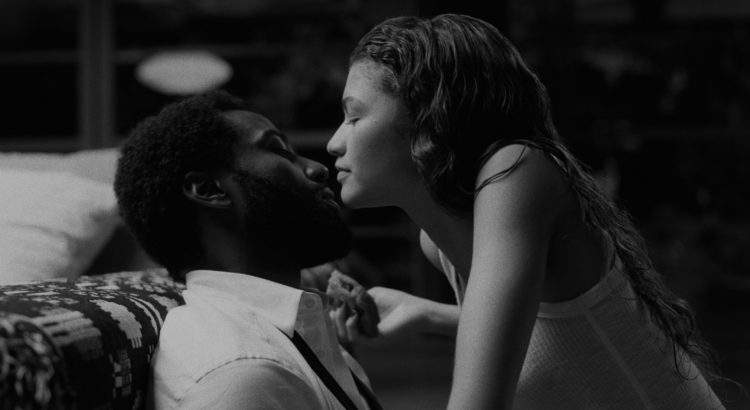Many artists have attempted to utilize our current situation in order to inform the art that they create. Netflix’s new film Malcolm & Marie is notable for being the first Hollywood film written, financed, and produced during the pandemic. Written and directed by Euphoria creator, Sam Levinson, the story deals with an up-and-coming film director, Malcolm (John David Washington), and his girlfriend Marie (Zendaya) as they return home from Malcolm’s film premiere. Shot gorgeously in black and white by cinematographer Marcell Rév, the two characters go through one long and fraught night, with their large house in the middle of a California desert serving as the film’s only location.
Coming into this film from my background in theatre, I was intrigued. Some of my personal favorite plays take place in a similar set-up; a small group of characters having interesting conversations within a singular setting. I was curious to see a writer and director whose work I had enjoyed in the past (including a similarly small-scale episode of Euphoria filmed during the pandemic) tackle this genre in the medium of film. Where I ended up being ultimately disappointed, however, was in Levinson’s screenplay.
At the core of the story, was the toxic relationship between the characters of Malcolm and Marie. The film’s strongest moments revolved around the cinematography, direction, and poignant music choices that highlighted this fraught relationship and where it stood at various points in the film. However, the film’s emotional core was often lost and obscured in Levinson’s long-winded rants about Hollywood filmmaking and film criticism delivered through the character of Malcolm. Throughout the film, Malcolm goes on a series of rants against a white female LA Times critic who had once given him a bad review. Other reviewers have been quick to point out, a similar occurrence in Levinson’s past where an LA Times film critic wrote a scathing review of Levinson’s 2018 film Assassination Nation. A similar situation is brought up in Malcolm & Marie, but Levinson decides to tie it to a discussion of black identity being reflected in filmmaking. This is an interesting point of conversation to be brought up, and if it were written better, it may be easier to excuse Levinson, a white writer, using Washington, a black actor, as a mouthpiece to his frustrations. Ultimately, however, Malcolm’s long tirades serve only to alienate Marie and the audience from his character further. Washington tries his best with the material, but his performance suffers heavily in these sections as the character is not allowed to have nuance and charm.
It is Zendaya’s character, Marie, that is the most intriguing but feels the least developed by the time the movie is over. Early on in the film, we learn that she is unappreciated by Malcolm, yet he leans on her heavily for his creative inspiration. This is an interesting dynamic and Zendaya plays it well, however, due to the bluster of Malcolm’s character, Marie soon finds herself entangled in unwinnable screaming matches with him and it starts to get exhausting to watch as an audience member. The film does offer a few moments of reprieve, often accompanied by music, but these do not come often enough to get the audience emotionally invested in the characters again before their next argument comes.
Overall, this film was an interesting study of what could be done by a small, accomplished group of creators during the pandemic, but it failed to work for me as a film on its own merit. However, I do think that it is worth checking out if it is something that you were already interested in, as it evoked complicated feelings in me, and I could completely understand how it could be experienced differently by different individuals.


